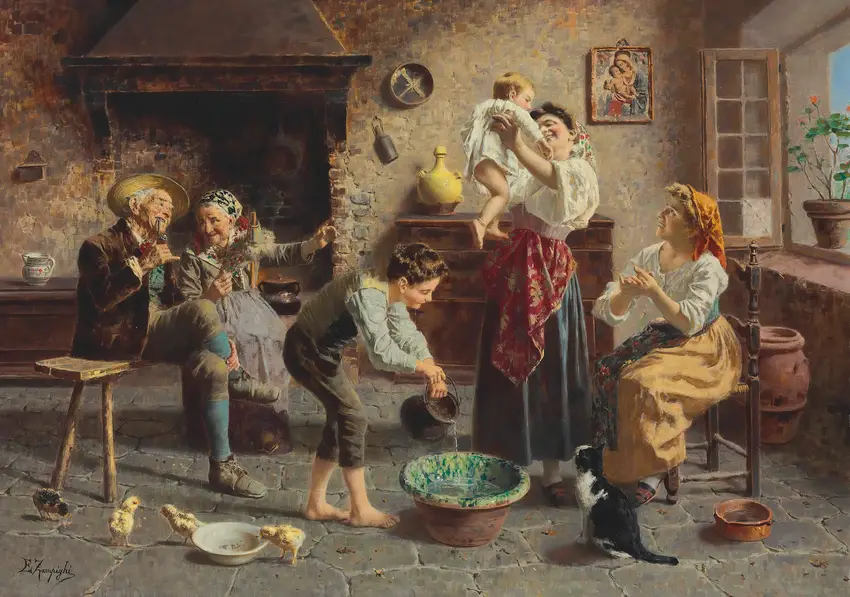Eugenio Zampighi
Eugenio Zampighi (1859–1944), Italian, Known for his tender and often sentimental depictions of domestic life, this Italian painter captured the warmth and intimacy of 19th-century rural and bourgeois settings. His work, though sometimes dismissed as overly nostalgic, reveals a keen eye for detail and a mastery of light that brings his scenes to life. With a soft, almost photographic realism, he rendered textures—lace, wood, fabric—with such precision that viewers could almost feel them. Genre painting was his forte, particularly scenes of children, families, and musicians, often infused with a quiet humor or gentle melancholy.
While not a radical innovator, his technical skill and emotional resonance earned him popularity among collectors, especially in Europe and America. Critics of his time praised his ability to balance narrative charm with compositional rigor, though later generations occasionally relegated him to the status of a "salon painter." Still, his influence persists in the way he elevated everyday moments into something poetic, a quality that continues to endear his work to audiences today. Zampighi’s legacy lies in his unwavering commitment to beauty, even in the ordinary—a reminder that art need not always shock to captivate.
While not a radical innovator, his technical skill and emotional resonance earned him popularity among collectors, especially in Europe and America. Critics of his time praised his ability to balance narrative charm with compositional rigor, though later generations occasionally relegated him to the status of a "salon painter." Still, his influence persists in the way he elevated everyday moments into something poetic, a quality that continues to endear his work to audiences today. Zampighi’s legacy lies in his unwavering commitment to beauty, even in the ordinary—a reminder that art need not always shock to captivate.
-

Bath Time
Eugenio Zampighi (Italian, 1859–1944)A child’s playful bath becomes a tender study of light, texture, and fleeting familial moments.
